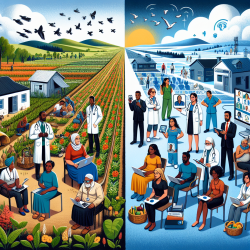Introduction
In the realm of online therapy services, particularly for speech-language pathology, understanding the interaction between various environmental factors and therapy outcomes is crucial. The SimSphere Soil Vegetation Atmosphere Transfer (SVAT) Model, primarily used for studying land-atmosphere interactions, offers valuable insights that can be leveraged to enhance therapy outcomes for children. This blog explores how practitioners can utilize findings from the SimSphere SVAT Model to improve their skills and encourage further research.
Understanding the SimSphere SVAT Model
The SimSphere SVAT Model is a sophisticated tool designed to simulate the interactions between soil, vegetation, and the atmosphere. It provides a deterministic estimate of various state variables, such as soil moisture and energy fluxes, at fine time-steps. This model has been instrumental in over thirty interdisciplinary studies, proving its robustness and versatility.
Application in Online Therapy
While the SimSphere SVAT Model is traditionally used in environmental studies, its principles can be applied to online therapy settings. Here’s how:
- Data-Driven Decision Making: The model emphasizes the importance of data in understanding complex interactions. Online therapy can benefit from a similar approach by utilizing data analytics to tailor therapy sessions based on individual needs.
- Environmental Context: Just as the model considers environmental variables, therapists can consider the child's home environment when designing therapy plans, ensuring that the therapy is contextually relevant.
- Interdisciplinary Approach: The model's success in interdisciplinary studies suggests that collaboration with other professionals, such as educators and psychologists, can enhance therapy outcomes.
Encouraging Further Research
The SimSphere SVAT Model's integration with remote sensing data highlights the potential for innovative research in online therapy. Practitioners are encouraged to explore:
- Technology Integration: Investigate how technology, such as wearable devices, can be used to gather data on environmental factors affecting therapy outcomes.
- Longitudinal Studies: Conduct studies to understand how changes in the child's environment over time impact therapy effectiveness.
- Cross-Disciplinary Research: Collaborate with environmental scientists to explore how environmental data can inform therapy practices.
Conclusion
The SimSphere SVAT Model offers a unique perspective on the importance of environmental factors in therapy outcomes. By adopting a data-driven approach and considering the broader context, online therapy practitioners can enhance their skills and create better outcomes for children. For those interested in delving deeper into the research, the original paper provides a comprehensive overview of the model's applications and findings.
To read the original research paper, please follow this link: An Overview of the Use of the SimSphere Soil Vegetation Atmosphere Transfer (SVAT) Model for the Study of Land-Atmosphere Interactions.










